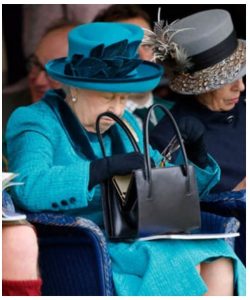It is almost impossible to see a woman without a handbag in the busy streets of Nairobi or anywhere in the world. Women and handbags are said to be indivisible twins.
However, handbags actually started out as a man’s accessory. The term was first popularised in 1900 as a term for a man’s briefcase and as far back as Ancient Egypt, hieroglyphics portray men carrying pouches around their waists.
With the introduction of pockets to men’s clothing in 1670, men discarded bags, and they began to be known purely as the domain of women’s fashion.
After the First World War, women entered the working force giving them power to own their own properties without depending on the man like before. Therefore, carrying a handbag became a sign of independence and stature.

Handbags had a role to play in the women’s equality movement, giving them a place to carry their own money and possessions. This is why handbags have always functioned as signifiers of power, status and beauty, in addition to their practical uses.
In the modern era, handbags have become a deep psychological need to the female species. It brings out the desire to organise and contain that which is important to their daily lives. At the most basic level, a hand bag carries important personal effects that need to be mobile.
{ Read: Kenyan middle class drives flower consumption }
Now made of any material imaginable, women carry today’s bags over their shoulders, under their arms or in their hands to store all the necessary accoutrements of modern life.
They have, however, evolved to accessories as opposed to just being something to carry stuff around in.
Speaking to Business Today, Nairobi-based businesswoman Ms Zipporah Mwangi, the founder of Bags and Fashion 254 that doubles as an online retail store, says that the modern women loves to show off their handbags based on their fabric and design.
Approximately four years into the business, Ms Mwangi says that she has noted how her clients give specific details on what they want in a handbag.

“The colour, size, design and the fabric are the most looked details in a handbag. This is because it shows off personal taste and suggests economic prosperity of the owner,” says Ms Mwangi.
{ See also: Business intelligence in the era of big data }
Ms Mwangi’s product that range from the prices of Ksh1,800 – Ksh3,500 have good sales every month making the commodity one of a kind that has rare peak and off-peak seasons.
The higher priced handbags are usually bought by the working class women, mostly those in white collar jobs. Aside from their basic use, they are act as a statement in the economic status and job position.
There is a screaming difference between a handbag carried by a CEO woman and that of a junior worker.
The multi-million handbag industry has a fast changing trend making it more lucrative. With new designs coming out in 3-4 weeks, the basic reason, making it convenient to help solve women’s struggles is the primary factor that has not been ignored by designers.

“At the moment, small handbags and sling bags are trending unlike in the recent past where very large size of bags were on the sale. This shows the level of mental change in women on how much luggage a handbag should carrying. Basically, it should be the portable stuff that we need in our day-to-day activities,” she says.
Mobile phones, chargers, makeup kit, ATM cards, handkerchiefs and pocket tissues, a note book, a pen, earphones, flash drive, a healthy snack and hair brush, among others, are the most common things you will find in a woman’s purse.
{ See also: Poor left out of mining profits as ‘resource curse’ hits Kenya }
Currently, the most expensive handbag in the world is Mouawad 1001 Nights Diamond Purse that goes for $3.8 million. As its name suggests, it is adorned with a total of 4,517 diamonds, comprised of 105 yellow diamonds, 56 pink diamonds, and 4,356 colorless diamonds.

In possession of such an item, there’s no need to wear a bracelet or other jewellery to the parties as it stands for any ornaments or expensive stones a girl could want on them.












2 Comments